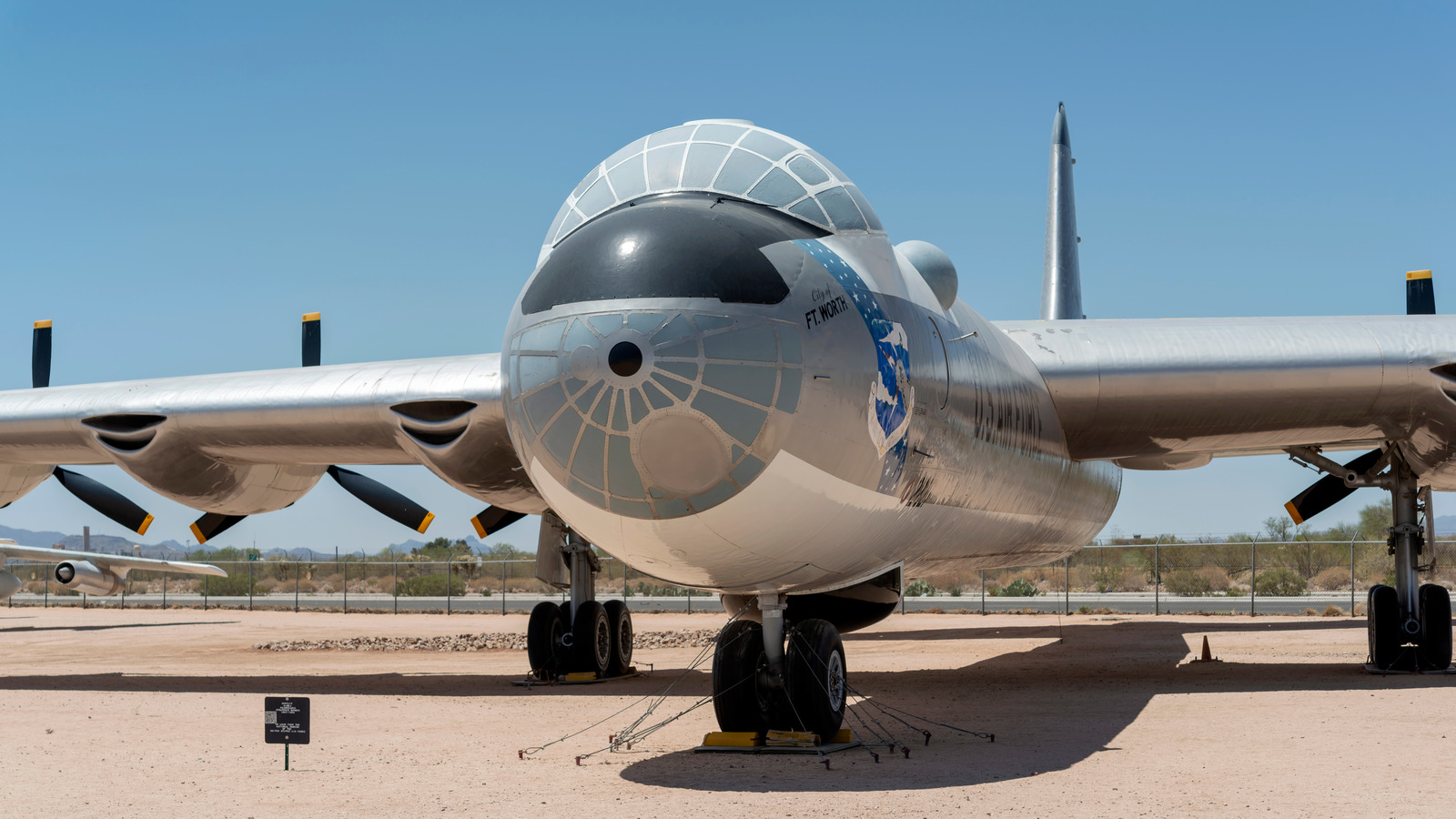
The Convair B-36 Peacemaker: America’s Massive 10-Engine Strategic Bomber – SlashGear
With military aircraft, a certain balance has to be struck. Ultimately, it’s impossible to excel at everything. Britain’s acclaimed Avro Vulcan bomber, for instance, packed a hefty punch and was built for speed and power, but there was precious little scope to incorporate any tech that would dissuade attackers. Maneuverability was its only defense.
A heftier engine may add more weight, and a higher top speed would add more pressure on the body of the plane itself. Every element, in short, is another Jenga block, and removing one design issue from the equation can cause a cascade of other problems that hadn’t been foreseen.
Since the days of the Wright Brothers, the most iconic aircraft have been those that tried something radically new, something unique for its time — aviation technology does advance at a remarkable rate. Before the devastating unpredictability of stealth bombers came the mighty Convair B-36 Peacemaker: a United States aircraft that didn’t know the meaning of the word subtlety. This behemoth of a bomber packed a total of 10 engines, as well as quite the payload.
The introduction of the Convair B-36 Peacemaker
 BlueBarronPhoto/Shutterstock
BlueBarronPhoto/Shutterstock
On September 2, 1945, Japan’s surrender marked the end of World War II. At times, during the peak of the German forces’ devastatingly effective blitzkrieg gains, this ultimate outcome may have been unthinkable. Though the Allies finally prevailed, governments and commanders on both sides were constantly at work trying to adapt to the dynamic situation. Preparing for the best and for the worst simultaneously is part of warfare.
Though the United States joined the conflict rather late, the nation had surely been watching as the face of Europe and the wider world changed dramatically. As part of the U.S. adaptations to this and its potential consequences, a new aircraft was required — a “strategic bomber with intercontinental range,” according to the National Museum of the United States Air Force.
The result of Convair’s work was one of the most intimidating and implausibly large bombers in history. The outlet goes on to report that the B-36 was slightly over 162 feet (49.4 meters) long and weighed 410,000 lbs. It boasted no less than 10 engines — a quartet of them were General Electric J47 engines.
When they were all in use, this humongous aircraft could still travel at quite the lick: it could reach up to 435 mph (700kmph) at top speed. There’s no doubt it was built for size and power, rather than pace. In June 1948 (just under two years since it first took off), the B-36 began its military career.
How long was the Convair B-36 Peacemaker in use, and what became of it?
 tishomir/Shutterstock
tishomir/Shutterstock
The continent-crossing concept made this extraordinary aircraft far more ambitious than most others of its day. A newsreel from August 1946 documented its first flight, noting that it “can cruise for … 10,000 miles,” and was “the world’s largest land-based bomber, originally designed for round trips to European battlefields.”
Though it was never used for this purpose — owing to the time it was finally completed, and the way that World War II ultimately concluded — there can be little doubt that it would have inflicted tremendous damage on any battlefield. Its full payload of bombs (some of which could have been nuclear payloads) weighed 86,000 pounds.
With the Cold War remaining just that, thankfully, the B-36 and its formidable payload became surplus to requirements. 1959 marked the end of its use as a military aircraft, its time numbered by the development of ICBMs that could essentially automate its job in a more efficient fashion. Not to mention the advance of jet technology leaving it in the dust.
It was largely used for reconnaissance purposes during its brief span in service, and though it didn’t become iconic and very few still remain, aviation connoisseurs know an incredible aircraft when they see one. Even if it may not look like much in this new age of hypersonic bombers.








































































